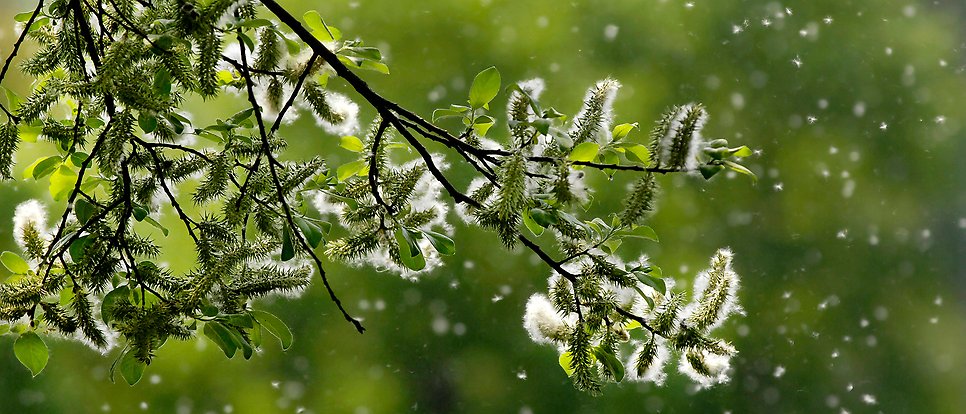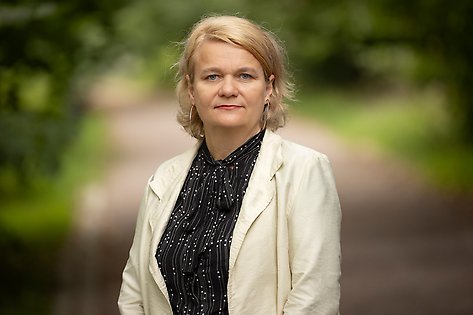From pollen analysis to sustainable future

Uppsala University plays a significant role by contributing expertise in seed analysis, pollen analysis and phytolite analysis. Photo: Getty Images
The climate and the environment are among the very most vital issues of our time, yet humanity has confronted the challenges we face today in the past as well. By studying archaeology and global environmental history we can gain perspective and learn from previous generations.

Anneli Ekblom, Professor of Archaeology and Global Environmental History.
Our planet has undergone a journey in time and space that has sculpted the environment we are familiar with today. Consequently, an environmental historical angle can help us negotiate the challenges we face now. This is the opinion of Anneli Ekblom, Professor of Archaeology and Global Environmental History at the Department of Archaeology and Ancient History at Uppsala University.
Ekblom belongs to ArchLab, a new national research infrastructure.
“The purpose of ArchLab,” she explains, “is to both develop and supplement existing methods in order to answer questions in archaeology and environmental history.”
Bringing together different scholarly disciplines
ArchLab brings together different scholarly disciplines in archaeology, including DNA analysis, charcoal analysis and dating.
“It acts as a bridge between researchers and laboratories. Instead of phoning round from lab to lab, we can now pool our resources and offer advice,” Ekblom says.
The participants in ArchLab include Uppsala Archaeobotanical Group, which Ekblom represents, the SciLifeLab Ancient DNA unit and the Tandem Laboratory from Uppsala University. The Environmental Archaeology Lab at Umeå University is the principal owner of the infrastructure, which also includes the Archaeological Research Laboratory at Stockholm University and several units at Lund University.
Important to analyse seeds and pollen
Collaboration between different archaeological laboratories makes it possible to improve research methods and answer a range of research questions. ArchLab enables different laboratories to collaborate, with advantages including opportunities to maintain and pass on knowledge and to share the costs of expensive machinery and laboratory space.
“In the past, departments could afford to employ technicians, but that’s not the situation now,” Ekblom says.
Uppsala University plays a significant role by contributing expertise in seed analysis, pollen analysis and phytolite analysis.
“All these types of analyses are important tools for understanding subsistence patterns and the organisation of agriculture back in the past. These methods not only give us insights into historical events, they can also be used to support present-day environmental protection and climate data collection,” Ekblom elaborates.
Global environmental history gives perspective
Ekblom is also in charge of the global environmental history programme. This interdisciplinary programme involves collaboration between archaeology and ancient history, art history, economic history and human geography, as well as the Centre for Environment and Development Studies (CEMUS) at Uppsala University and the Swedish University of Agricultural Sciences (SLU). The programme complements ArchLab as the students work on broad issues in global environmental history, landscape planning and sustainability.
“It is important to put sustainability and sustainability issues in perspective. Many problems we face today have historical parallels, and we can improve our understanding by learning from the past,” Ekblom says.
Revealing the secrets of nature
By combining archaeological material and historical sources, researchers and students are striving to contribute to current societal issues. Although they are not directly connected, the global environmental history programme and ArchLab offer multifaceted insights and interdisciplinary methods. These are powerful tools for exploring and understanding past and future challenges for our planet. Their work enables us to be surprised by new knowledge and to apply the insights to promote sustainability and environmental protection.
“It’s important to be able to specialise and to collaborate, so as to maintain and pass on knowledge,” Ekblom concludes.
Agnes Loman
ArchLab
The ArchLab Infrastructure is a joint collaborative venture of 13 high profile laboratories for supporting archaeological science research. It aims to unite their forces into a single, distributed Swedish national resource for scientific methods in archaeology, thereby facilitating novel and ground-breaking research, and ensuring the availability and accessibility of existing and emerging methods and data as well as international competitiveness.
